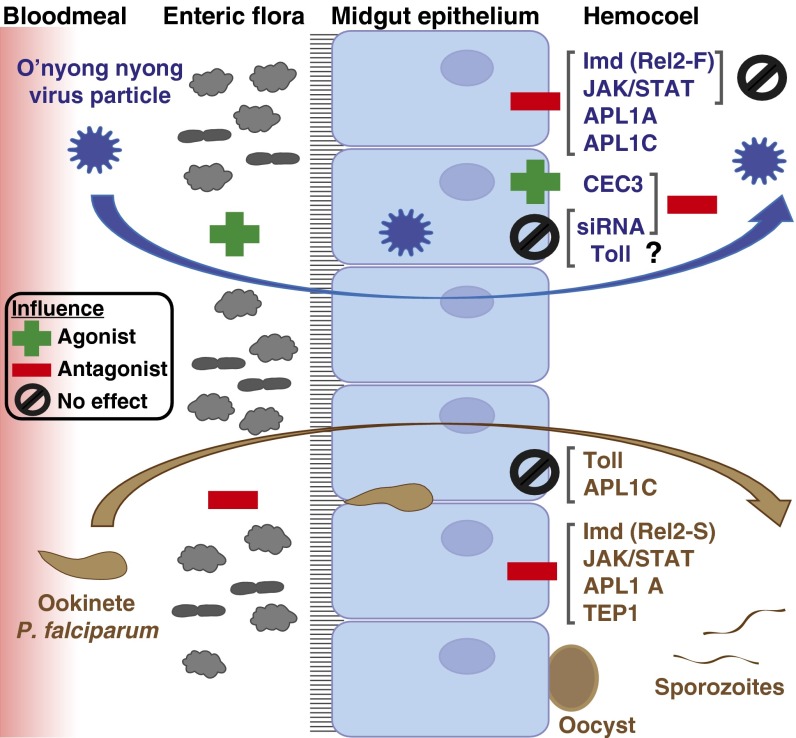Fig. 6.
Influence of An. gambiae host-defense mechanisms upon blood-meal infection by ONNV and the human malaria parasite P. falciparum. Largely distinct suites of protective mechanisms operate within the midgut and hemocoel tissue compartments. (Left) Midgut entry of ONNV (blue) and P. falciparum (brown) within the blood meal is depicted. The enteric flora displays an opposite effect on infection by the two pathogens, facilitating infection by ONNV (acting as an agonist) and diminishing infection by P. falciparum (acting as an antagonist). (Middle) In the midgut epithelium, the JAK/STAT and Imd pathways limit infection by both pathogens, although the protective Imd response to ONNV or P. falciparum is mediated by distinct isoforms of the transcription factor Rel2 (Results). (Right) However, JAK/STAT and Imd have no detectable influence on viral load in the systemic hemocoel compartment when the midgut is bypassed by virus injection (28). The siRNA pathway displays the inverse pattern, controlling viral infection in the hemocoel but with no influence over virus in the midgut. Little is known of the systemic hemocoel response to P. falciparum sporozoites. The antimicrobial effector CEC3 cooperates with viral infectivity in the midgut after blood exposure but was shown to protect against virus in the hemocoel after needle infection (28). Two LRR protein immune factors, APL1A and APL1C, control ONNV infection in the midgut, whereas only APL1A protects against P. falciparum and APL1C has no effect on this parasite (36). The mosquito complement protein TEP1, a subunit partner with APL1C in a functional immune complex, protects against P. falciparum (65) but has no effect on ONNV, which points to the likely existence of other unknown immune subunits interacting with APL1 proteins in distinct functional complexes that exhibit antiviral activity. The Toll pathway is not involved in either anti-ONNV or anti-P. falciparum midgut immunity, although Toll is involved in midgut protection against the rodent malaria parasite anti-Plasmodium berghei (36) and displays anti-ONNV activity in Anopheles cell culture (Results).

